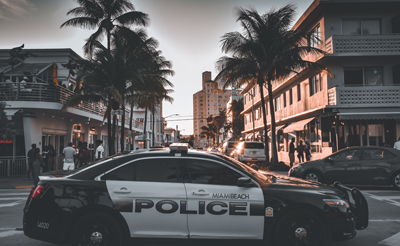
Steps Boards of Directors Can Take to Keep Themselves and Meetings Safe
By Darion Samuels / Published April 2023

S
et a Time
Depending on the size of the meeting and the goals you plan to achieve, plan a time that works well for all attendees. Considering the average work schedule, plan the board meeting for early evening to ensure more participation.
Invite Attendees
Have each attendee sign a roster to keep track of everyone who attended. Restrict outsiders; only allow attendees who are a part of the community or guests invited by the board to attend the meeting. This eliminates disrupters looking to push an agenda for biased motives. Conflict is more likely when the outcome is important, and the decision will reflect badly on the person pushing the agenda. Strategy is needed to create a peaceful environment, so invite the decision makers to avoid any future conflict.
Choose an Ideal Location
Choose a site with a common area and sufficient lighting, such as a clubhouse auditorium or conference room. Try to park close to the building where there’s plenty of lighting. It’s common for clubhouses to install video surveillance in the common areas, so there would be footage of attendees entering and exiting if such footage needs to be reviewed. If your community has an on-site security team, invite a representative to join the meeting as well. A security presence helps mitigate the chances of attendees getting out of order during the meeting. Provide adequate seating to ensure everyone is accommodated and no one’s left standing. Stand-ing for a long period of time could lead to distress and create a hostile atmosphere.
Personal Panic Solution
Another proactive way to strengthen your assembly’s safety would be to invest in a personal safety solution. There are many devices you could use as unplanned protection, but a personal panic button is a low-cost but effective device that could initiate a call to a monitoring station such as ADT Security or call 911 for a quick response to any threat. Another discretionary way to alert authorities for help would be the use of an app that could send out an SOS via platforms. For example, the “ADT SoSecure” mobile safety app actually shares your GPS location as well as notifies an emergency contact and 911 for faster responses. Implementing any of these solutions would enhance the safety of everyone attending your board meetings.
Invite Local Leaders
Utilize your local authorities. Invite the local police and city representative to review recent incidents or upcoming projects that the residents should be made aware of. Allow the guest speaker a few minutes of Q and A for a healthy discussion. This is a great way to collaborate and build trust with the community and the local authorities. Many police departments form citizen boards to assist with creating strategies to reduce crime. The presence of law enforcement will help mitigate the chances of an attendee getting out of control and causing tensions to escalate during the meeting. Invite local city representatives to help align residents with planned local projects and events. This will also help inform residents of new code requirements for the surrounding area.
Have an Agenda
Have an agenda for all the topics you want to discuss, and place them in order of importance based on the purpose of the meeting. Distribute the agenda before the meeting starts to ensure everyone is following along and knows what to expect. Focus on the decision-making process if there are items that need a vote or consensus, as knowing the process saves time and allows the meeting to stay on schedule. Implement rules of engagement by establishing how to have healthy dialogue, but allocate enough time for each topic. Be sure to stick to the agenda so the meeting starts and ends on time. Make sure the secretary or a designee is present to take notes throughout the meeting to revisit what was discussed and any action plans needed for follow-up. Highlight any tasks that were delegated, and request deadlines to check the progress of each action item.
Follow Up
After all the action plans are established, follow up via email and provide a brief recap with a timeline for each plan. To avoid the stress of planning and securing another location, do not schedule additional board meetings unless absolutely necessary. Focus on the goals that were accomplished and action plans that are in progress. Lastly, schedule a follow-up date to discuss the progress virtually if need be.
Darion Samuels
Senior HOA Account Manager, ADT Community Association Program
Darion Samuels is Sr. HOA account manager for ADT Community Association Program. We have a dedicated team that works primarily for ADT HOA communities, providing world-class customer care and service to more than 100,000 residences through bulk agreements. This includes 24/7 monitoring by our own state-of-the-art monitoring centers and “concierge-level” customer care and service provided by our exclusive community association service center. Alarm systems feature interactive technology, high-resolution CCTV systems, and customized smart home solutions for HOA customers. For more information, contact Darion Samuels at samuelsd@adt.com or call 954-299-1000.





